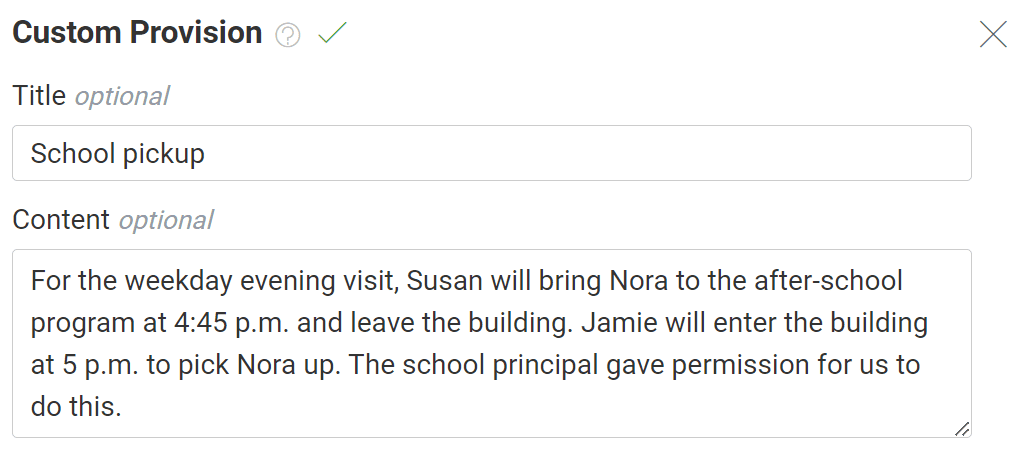Supervised Custody Exchanges
A custody exchange is when one parent hands the child off to the other. If parents are unlikely to do this calmly and smoothly, they may need supervised exchanges (also called monitored or safe exchanges).
In a supervised exchange, a neutral third party is present to shepherd the handoff. The parents might not even see each other.
Supervised exchanges protect parents from each other and prevent the child from witnessing conflict.
This is different from supervised visitation, which protects a child who would be at risk if left alone with a parent.
How supervised exchanges work
Supervised exchanges are almost always ordered by a court, though parents can agree to use them without going to court.
When a court orders the exchanges, it stipulates who can do the supervising. It may approve a friend or relative of the family, or it may require the family to hire a professional.
The court can also specify where exchanges must occur. In some areas, like Florida, parents may exchange their child at a designated "safe zone" at their local sheriff's office. If a friend or relative will supervise the exchanges, their home or a public place — like a school or library — may work. If the family hires a professional, transfers usually take place at an exchange center. (Some professionals travel to off-site exchanges, but they tend to charge much more.)
Exchange centers can be run by governments, organizations or private companies. They have trained employees or volunteers available to monitor exchanges, often during limited windows a few days a week. These spaces focus on safety and making children comfortable, usually having both security officers and toys on site.
Centers generally charge $10 to $50 per exchange, sometimes on a sliding scale. One parent may pay or the two may split costs, depending on their negotiations, the court order or the center's policy.
In some cases, supervised exchanges prevent parents from seeing each other at all. The parents might arrive at different times or use separate entrances, leaving the child with the supervisor for a few minutes between drop-off and pickup. Arkansas even has a law covering this; parents who'll regularly exchange their child at school must avoid seeing each other during the exchange and must seek the principal's permission for this arrangement.

You can customize this to fit your situation with Custody X Change.
When supervised exchanges are necessary
Emotional or violent custody exchanges can have lasting effects on the parents and child involved. Supervision seeks to eliminate this turmoil from the transfer process.
Families may need supervised exchanges if they've dealt with:
- Intimate partner violence (domestic abuse)
- Restraining orders
- Severe feuding over custody or divorce
- Parental alienation
- Repeat issues with exchanges, such as late arrivals
Families with sole or joint custody arrangements can use supervised exchanges.
Ideally, supervision is only necessary in the short-term, as parents learn to interact with each other respectfully.
Putting supervised exchanges in your parenting plan
When you write supervised exchanges into your parenting plan, use airtight language that leaves no room for interpretation. Be as specific as possible.
If you hire a lawyer, he or she can develop wording the judge will accept.
If you're writing your own plan, use technology to take the guesswork out of the equation. The Custody X Change app can insert provisions about supervised exchanges for you.
In your account, click the "parenting plan" tab. Then, within the "supervised visitation" category, select the supervised exchanges provisions that work for you.

You can customize this to fit your situation with Custody X Change.
Just like that your plan has a supervised exchange requirement that can be legally enforced once a judge signs it into a court order.
